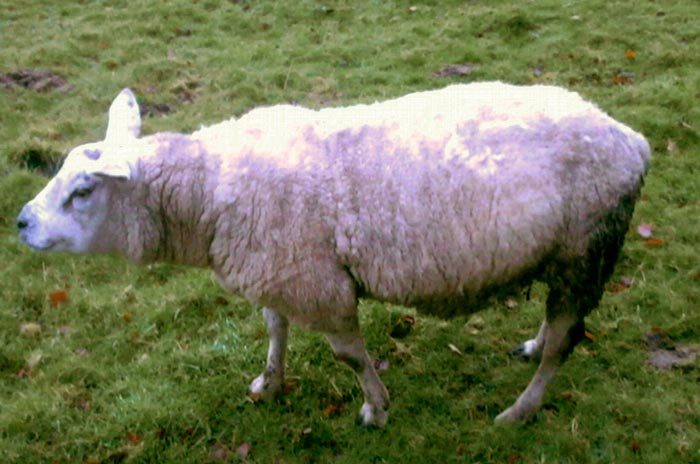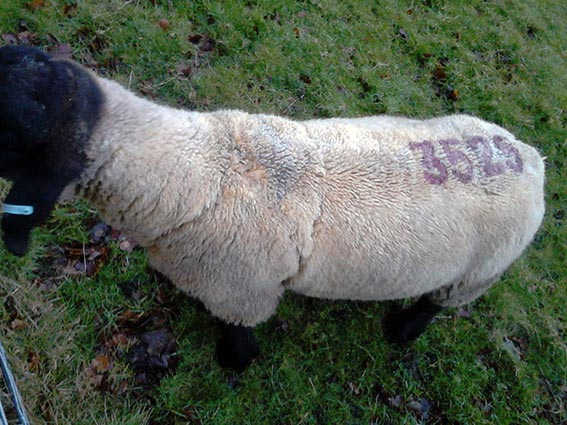10 Sept 2018
Preparing rams for mating season
Jenny Hull looks at how to ensure rams are at optimal level for breeding, in the first of a two-part article on ram preperation and fertility testing.

Figure 1. For two months of the year, rams need to be fit, sound fertile athletes.
Sheep production is very seasonal and repeats itself in a constant yearly cycle. Key events occur throughout the cycle that can have a huge impact on production, efficiency and, therefore, farm profits. Vets can play an important proactive role in these key events.
To minimise cost, and maximise production and profit, ram health, longevity and performance needs to be optimised. Buying “fit for purpose” rams that are not overfed, able to serve 80 ewes and survive for four years without being culled plays a role in this.
The preparation of rams should start around 10 weeks before tupping. Newly purchased rams should be quarantined for four weeks and receive a quarantine anthelmintic treatment, along with treatment for the prevention of sheep scab and liver fluke, and have their feet inspected. Rams should be in body condition score 3.5 for tupping. Any lameness, trace element supplementation, endoparasites and ectoparasites, and any vaccinations required, such as foot rot, clostridial and Pasteurella vaccination, should all be attended to pre-tupping. Rams in poor condition post-tupping should receive supplementary concentrate feeding.
Ram fertility testing will be covered in part two of this article.
Sheep production is very seasonal and repeats itself in a constant yearly cycle.
Key events occur throughout the cycle that can have a huge impact on production, efficiency and, therefore, farm profits. Vets can play an important proactive role in these key events. Rams are a very important part of the sheep production cycle and also a huge cost to the sheep enterprise, and this is sometimes forgotten.
Economics
The Kelso Ram Sales is the biggest one-day ram sale in the world. The record-breaking average ram price in 2017 was £709.54 (Border Union Agricultural Society). Lambs sold fat are typically worth between £50 to £90. Depending on the working lifespan of up to four years, a ram will depreciate by between £150 and £500 per year. Add to this the cost of a year’s keep, feed costs, vaccinations, parasite treatments and losses, rams are an expensive investment.
Table 1 (adapted from the Agriculture and Horticulture Development Board; AHDB) shows the cost per lamb sold of a ram bought for £709.54, depending on its longevity and the number of ewes the ram is able to serve. For example, a ram that is mated with 40 ewes and culled after one year will cost £11.42 per lamb sold. To minimise cost and maximise production and profit, ram health, longevity and performance needs to be optimised. Buying “fit for purpose” rams that are not overfed and able to serve 80 ewes, and survive four years without being culled, plays a role in this.
| Table 1. Adapted from the Agriculture and Horticulture Development Board. The cost per lamb sold of a ram bought for £709.54 depending on longevity and number of ewes the ram is able to serve. | ||||
|---|---|---|---|---|
| Number of ewes put to ram (selling at 150%) | ||||
| Ram lifespan | 40 | 60 | 80 | 100 |
| 1 year | £11.82 | £7.88 | £5.91 | £4.73 |
| 2 years | £5.91 | £3.94 | £2.96 | £2.37 |
| 3 years | £3.90 | £2.63 | £1.97 | £1.58 |
| 4 years | £2.96 | £1.97 | £1.48 | £1.18 |
Ram preparation
For two months of the year, rams need to be fit, sound fertile athletes (Figure 1). For the other 10 months, they are often forgotten on farms.
Preparing rams the week before they are required to go out with the ewes is too late. The preparation of rams should start around 10 weeks before tupping. For 1 April lambing, rams will go in around 5 November, so preparation should begin around the end of August.
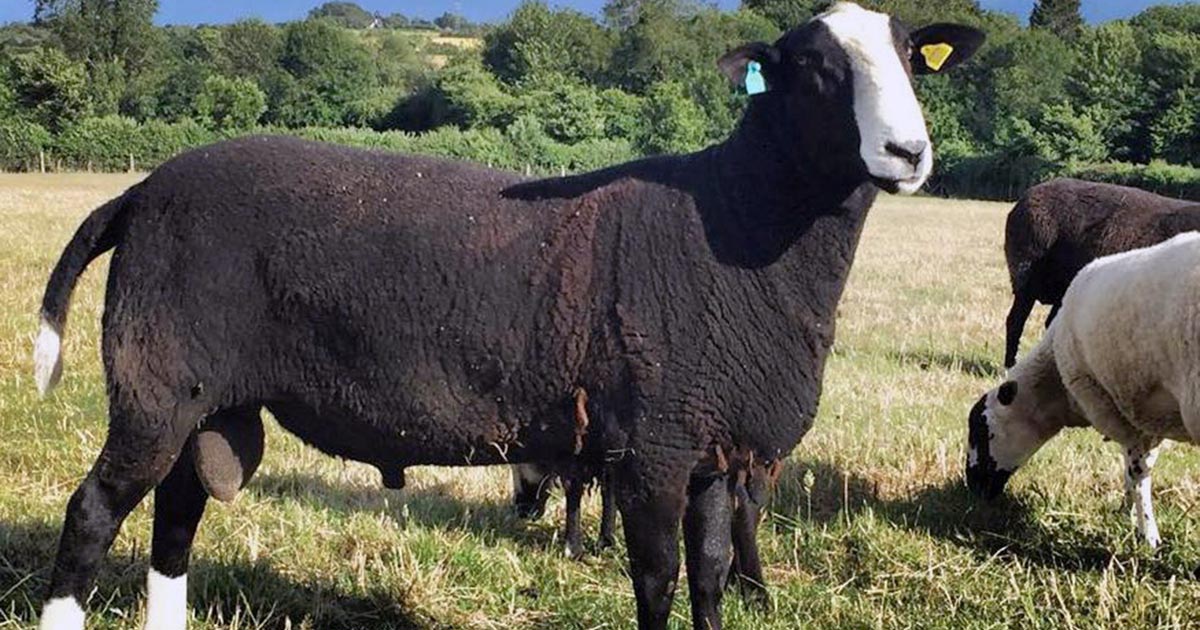
Newly purchased rams
Newly purchased rams should be quarantined for four weeks (Hosie and Clark, 2007). They should receive a quarantine anthelmintic dose of either monepantel (Group 4) or derquantel and abamectin (Group 5), and then be held off pasture for 48 hours (Sustainable Control of Parasites in Sheep; SCOPS, 2012).
During the quarantine period, rams should also receive treatment for the prevention of sheep scab (Psoroptes ovis), such as an injectable macrocyclic lactone. The author prefers moxidectin for its length of action against P ovis.
Options for liver fluke (Fasciola hepatica) control are either a triclabendazole or closantel drench, twice, six weeks apart. Compliance and farmers remembering to administer a second closantel treatment can be an issue.
A growing concern exists of macrocyclic lactone resistant P ovis mites and triclabendazole-resistant F hepatica, and vets and farmers should bear this in mind when formulating a quarantine treatment plan.
Careful examination of rams for signs of disease during the quarantine period is very important. During the isolation period, rams should have their feet checked and, if necessary, treated (Hosie and Clark, 2007). All newly purchased sheep should be foot bathed at least twice in the quarantine period, in either a 10% zinc sulphate solution or 3% formalin solution, which will reduce the presence of foot rot bacteria (Lewis, 2002).
Concerns have been raised for many years that breeding rams are overfed and this may limit their breeding performance (Vipond and Morgan, 2010). Overfed rams have a shorter lifespan, reduced bone density, increased joint deformities, increased risk of acidosis and urolithiasis, and increased scrotal fat leading to reduced fertility (Vipond and Morgan, 2010).
As vets, it is important to educate farmers to make informed choices and purchase rams cost-effectively. A change in this trend will not happen overnight, but purchasing rams based on estimated breeding values, rather than purchasing the biggest and fattest, will help going forwards, and the purchasing of rams privately and through on-farm auctions where a known health status exists, and less pressure to produce the biggest and fattest rams is increasing in popularity.
Vaccinations should be started during the quarantine period in line with the flocks’ vaccination programme. The author has seen a number of cases of rams that have died from Pasteurella septicaemia shortly after being purchased and advises all purchased rams receive a primary vaccination course of clostridial and Pasteurella vaccinations.
A risk of newly purchased rams bringing diseases into a flock, such as maedi visna, Johne’s disease or caseous lymphadenitis (CLA) exists. Ideally, where possible, rams should be purchased from accredited free flocks or blood testing carried out on arrival. Testing for CLA is less reliable in single bought-in animals, and an individual animal carrying Johne’s disease can be negative on blood tests and examination of faeces (Hosie and Clark, 2007).
No commercially available test exists for ovine pulmonary carcinoma (OPA), but transthoracic ultrasound examination has been shown to reliably identify OPA lesions of more than 2cm in diameter, and, in the absence of any other reliable diagnostic test, should be considered for screening purchased adult sheep (Cousens and Scott, 2015).
Existing ram flock
Body condition
Rams should be body condition score (BCS) 3.5 at tupping (Vipond and Morgan, 2010). It takes three-and-a-half weeks of supplementary feeding to increase BCS by 0.5 units (AHDB Beef and Lamb, 2017). Ideally, rams should be condition scored in plenty of time and feeding adjusted accordingly.
Rams in optimal condition 10 weeks before tupping should continue to be fed good quality grass. Those below optimal body condition should receive supplementary feeding – for example, 0.5kg concentrates at 16% crude protein per day, introduced slowly (Figure 2).
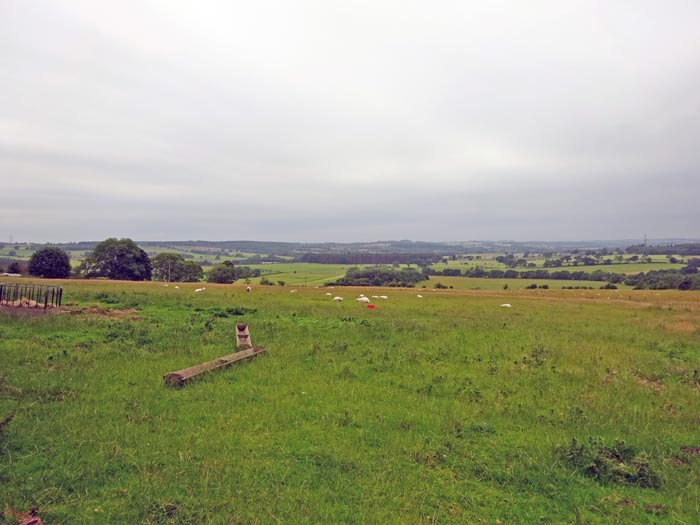
Feet
Attention to feet should be the first part of ram preparation and should begin well in advance. Lame rams and any cases of foot rot, contagious ovine digital dermatitis, toe abscesses and toe granulomas should be treated, but routine foot trimming should be avoided (Winter et al, 2015). The use of foot rot vaccination, even in just the ram flock, should be considered and carried out around six weeks pre-tupping.
Trace elements
The breeding season and polygamy of the ram mean its requirements for semen production will be relatively high over a short breeding season and this may induce a localised deficiency of zinc and/or selenium, resulting in a decrease in semen quality and production (Kendall et al, 2000).
The production of semen necessitates extensive cell division and this requires large amounts of zinc, as zinc is involved extensively in nucleic acid and protein metabolism (Kendall et al, 2000).
It has been shown zinc deficiency results in disorders of testes development and, of course, spermatogenesis (Akalin et al, 2015). Very low iodine levels have been associated with poor fertility and loss of libido, and selenium is a critical component of the tail of spermatozoa (Vipond J and Greig A, 2007; Suttle N and Jones DG, 2007).
Knowing the trace element status of a flock is very important for all stages of sheep production. Ascertaining the trace element status of ewes by blood sampling six ewes at weaning for copper, cobalt, selenium and iodine status, and then extrapolating those results for the ram flock, can allow accurate supplementation of rams. It is worth remembering newly purchased rams may have received a high quantity of background copper when receiving a large amount of concentrates when fed pre-sale. This is especially important in copper toxicity susceptible breeds, such as Texels. The author has seen death due to chronic copper toxicity in a newly purchased Texel ram.
Parasites
Ectoparasites
Rams often lie around inactive through the summer months (Figure 3), often in the same areas, such as under trees and, therefore, fleeces can be soiled with faeces.
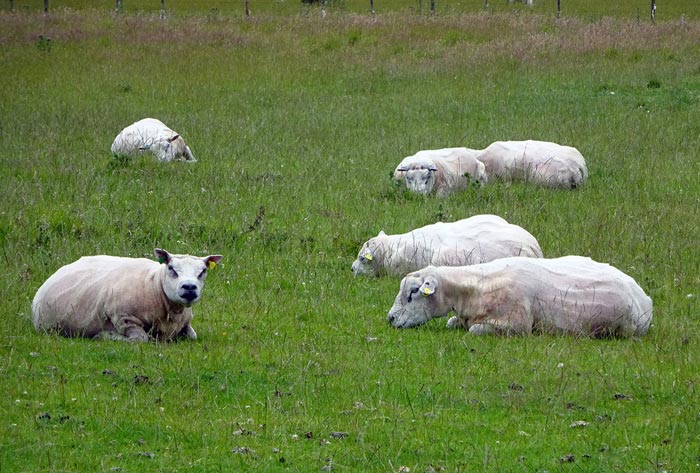
Fly strike prevention is very important. As the breeding season approaches, rams begin fighting and often have head wounds. These wounds can be plagued by flies, such as the head fly Hydrotaea irritans.
Fly strike prevention with an appropriate product, such as dicyclanil or cypermethrin, is essential for rams on most farms. Head fly irritation can be prevented with a cypermethrin-based product applied directly to the top of the head monthly through the summer and autumn (Figure 4).
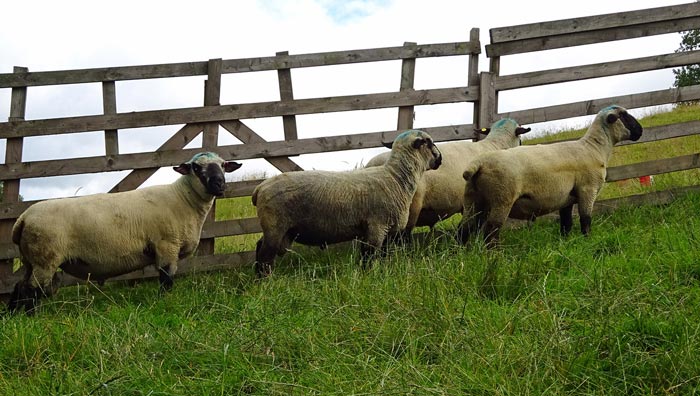
Endoparasites
Anthelmintic treatments will depend on the individual farm. It is worth remembering rams are often kept on the same pasture at high stocking densities on relatively poor pasture for most of the year and, therefore, may be at a greater risk of a heavier worm burden (Figure 5).
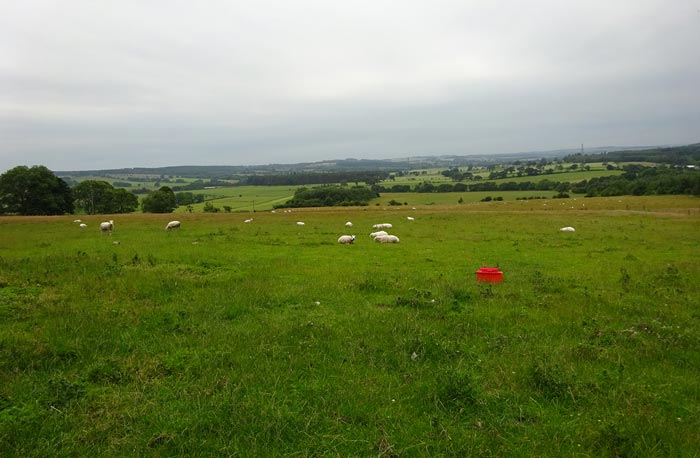
Worm egg counts should be performed and anthelmintic treatments tailored accordingly. Rams in poor condition and young rams may benefit from an anthelmintic treatment. Which anthelmintic group to use will depend on the individual farm’s history and anthelmintic group rotation.
Certain sheep breeds are selectively bred for worm resistance and an estimated breeding value is available. This resistance selection only affects animals more than four to five months old; therefore, selecting for resistance genes is more important in maternal lines rather than terminal sires (SCOPS, 2012).
Where F hepatica is present on farm, rams should be treated with a triclabendazole-based drench in the autumn to control the risk of acute fascioliasis caused by immature stages during tupping.
Vaccinations
Rams should not be forgotten in farm vaccination schedules and should receive them along with the rest of the flock against diseases such as clostridia, Pasteurella and foot rot.
Post-tupping
Rams can often be in poor condition (less than BCS 2) post-tupping, especially newly purchased overfed rams that have been out tupping on the hill (Figures 6 and 7). Rams should be BCS 2.5 to 3 outside of the breeding season. Therefore, rams in poor condition should receive supplementary feeding to help them through the rest of the winter and restore body condition.
A mid-winter F hepatica treatment, along with ewes with a closantel-based product, may also be appropriate on infected farms.
